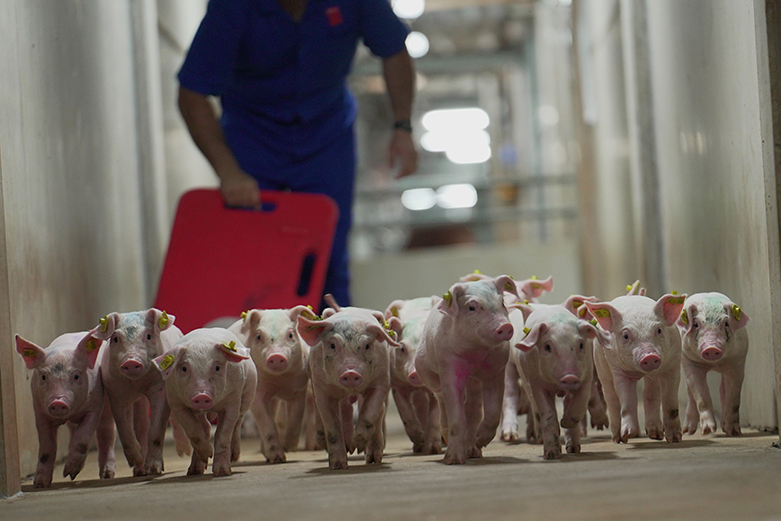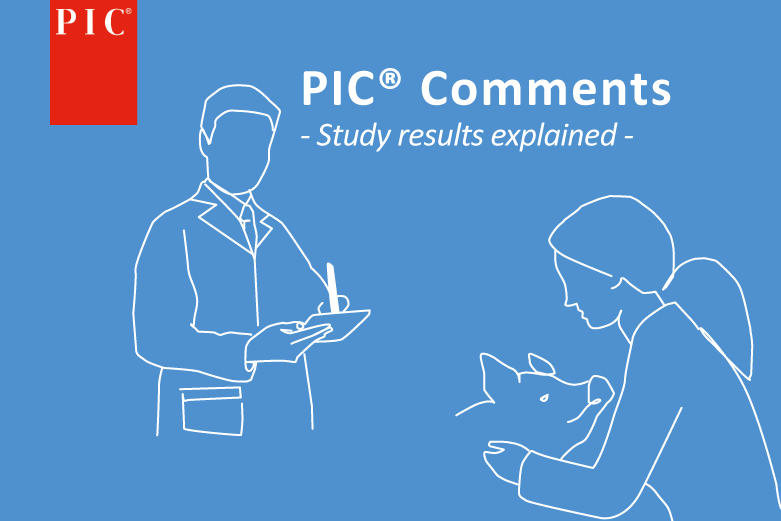Makes the Difference: For More Piglets and For Better Piglets

The importance of colostrum for the health of piglets is unquestioned. Colostrum provides energy and hydration to maintain vital bodily functions. It also provides protection against pathogens through local immunity (digestive) and systemic immunity. Pre-weaning mortality (PWM) continues to be one of the main challenges for the producer’s financial bottom line. Research shows that an amount of 200 ml of colostrum on day one increases survivability of piglets born in the 900 to 1,100 gram by 4 to 5 times (Ferrari et al (2014)).
One of the challenges is how to increase the number of piglets that get enough colostrum to thrive when born in large litters and/or for piglets born lighter than their littermates. “Different types of colostrum management are available to assure proper colostrum intake,” says Sebastian Casiro, Technical Services Manager at PIC. “Producers should proactively consider what kind of colostrum management they are capable of implementing consistently over time.”
Split-suckling
Split-suckling is the best method in terms of implementation and manpower needed. For split-suckling, a large litter is divided into two halves after farrowing is completed. Groups are separated for 90 minutes, and the smaller piglets are able to nurse with little competition. Split-suckling is commonly used for large litters, with more piglets than functional/milking teats. It is also useful for litters with uneven birth weights where the small-medium piglets are under a clear disadvantage to find a teat and to keep it when faced with competition.
Some tips:
- Take off the first born/largest 5 to 7 piglets to let the smaller ones nurse without competition
- As stated previously, not 100% of the litters born will require this support
- Wait until 15 or more piglets are born before starting split-suckling
- Never take piglets off the sow while she is still farrowing
Organization is key: make two daily rounds each day — one early in the morning for litters born overnight and the second round for litters born during the day.
Udder Training
The second option is udder training. The piglets are taught how to drink from the teats. Basically, hold piglets on the teats until suckling behaviour is established. This must be done within 30 minutes following on from birth and if necessary, a second time 60 minutes after birth. Focus on piglets that weigh between 900 and 1,200 grams at birth. It is important that the interval between birth and udder training is as short as possible.
Some tips:
- Mark piglets as they are born
- Choose the proper teat
- Execute udder training within 30 minutes post farrowing
- If necessary, repeat at 60 minutes after birth
- The goal is to have piglets drinking colostrum milk on their own after the intervention
Colostrum manual collection and administration
The third option for colostrum management is manual collection and administration. It is a method that requires more manual work than the other two options. In practice, this process currently requires too much time and effort to likely increase dramatically in use. Therefore, this option is limited to farms with a lower number of sows per full-time equivalent employee. For this method to be successful, it is important to identify the right sow and piglets to be collected and administered, respectively.
For colostrum collection, choose sows that are in parity 3 to 5. The best teats to collect are the first three pairs of teats. Avoid small ones. Collect the colostrum 1 to 3 hours after the first piglets are born. Collect for 30 minutes after an injection of oxytocin (use only under appropriate local health and management standards). Take a good look at the teats: a good quality teat is long, has good mammary gland development and wide teat space. A medium quality teat has short teats, but with good mammary gland development.
The next key is to select the piglet(s) that will be requiring the colostrum. The most important ones are those that are chilled and/or have empty bellies. Another option is to identify piglets that were born between 900 and 1,200 gram but are struggling to get started. Although colostrum can be provided for up to 24 hours after birth, it is preferable to be given within the first six hours.
When providing colostrum, the type of nipple used can greatly impact the desire of the piglet to express suckling behaviour. The right size, hole and softness is important. Delivery will take 1 minute and 40 seconds for one delivery of 30 cc. The volume should be about 30 ml per pig, per time. If the piglet is small, provide the most you can up to 30 ml without spilling colostrum; piglet suckling behaviour will be a key for successful delivery of the targeted quantity. From our experience, there are practical limitations when providing more than 30 ml for the piglets as they will show reduced suckling behaviour and tend to become lethargic.
Some tips:
- During collection, use a bottle with a wide cone to avoid spilling of colostrum
- Do not waste time on sows not producing enough colostrum to collect
- Consider 15 to 20 sows to collect 1 litre (1,000 ml) of colostrum
- Consider 1 hour to collect 1 litre of colostrum
- Collection will usually take 2 minutes for 30 ml
Sebastian Casiro continues: “Proper colostrum management makes it possible for every pig producer to improve their biologic and economic results. Remember that PIC Technical Services staff are available to help you with this or any other topics related to management, farm flow, stocking density and other important husbandry factors.”
Together we can maximise the long-term health and productivity of your herd.




